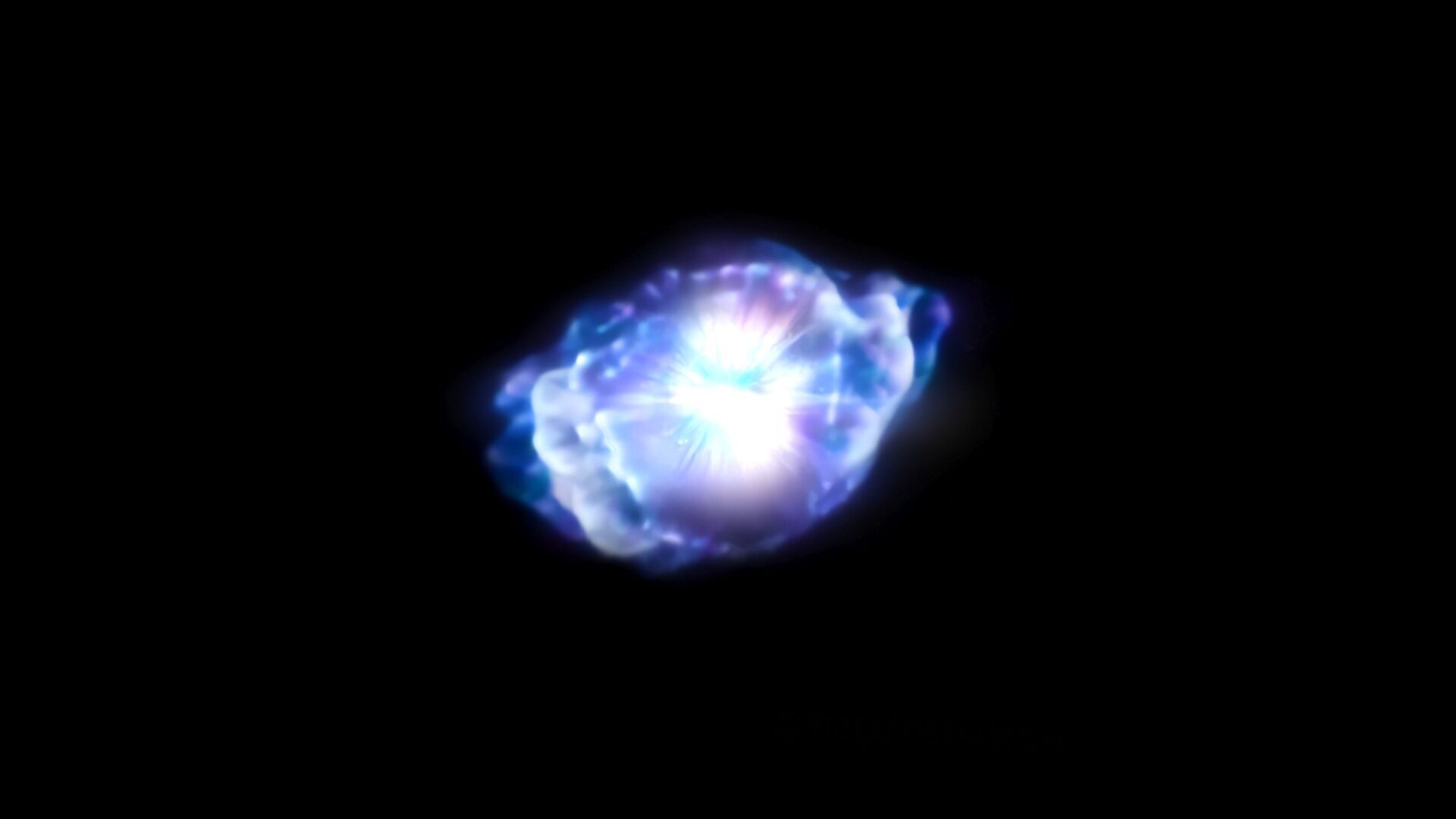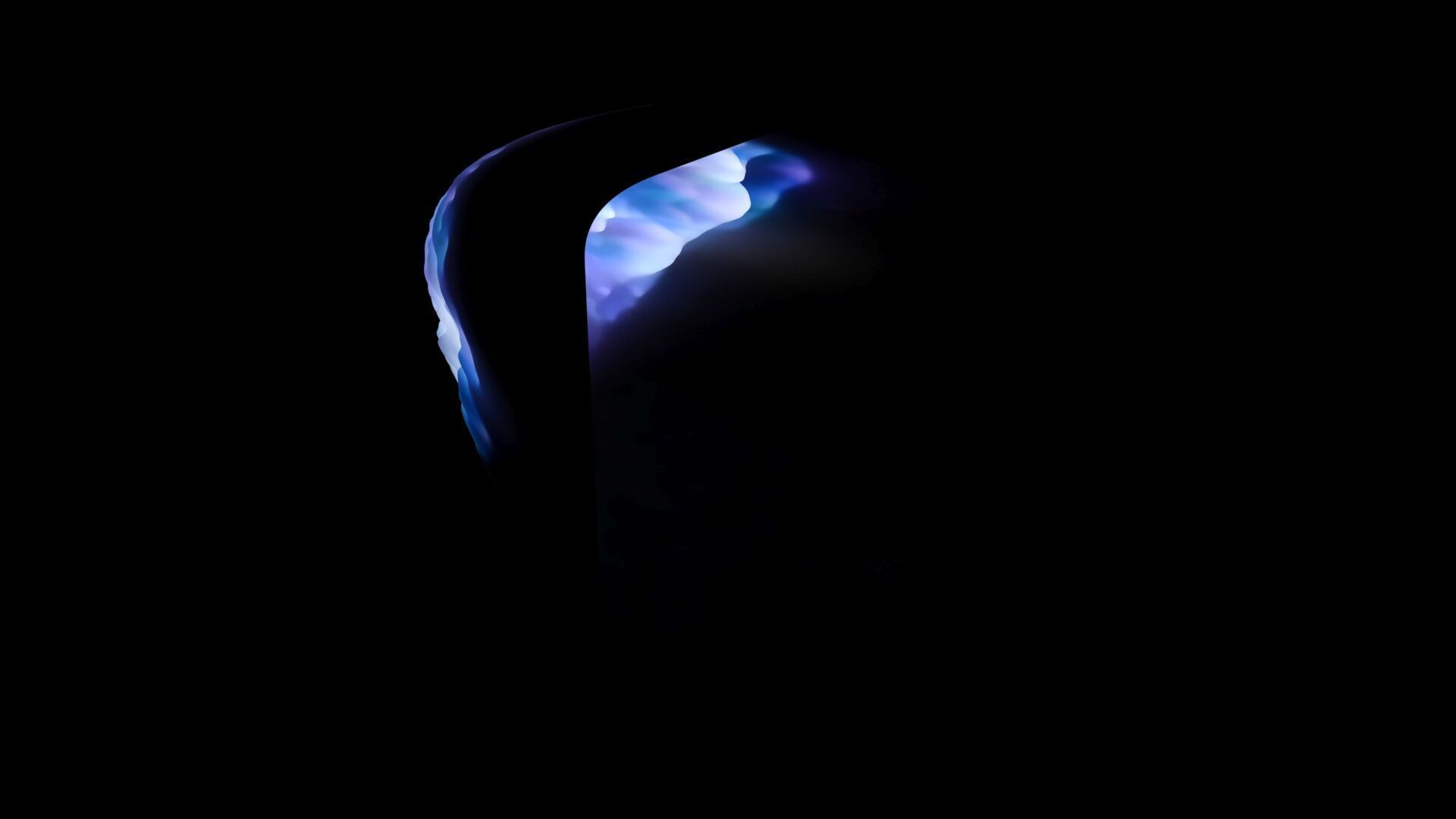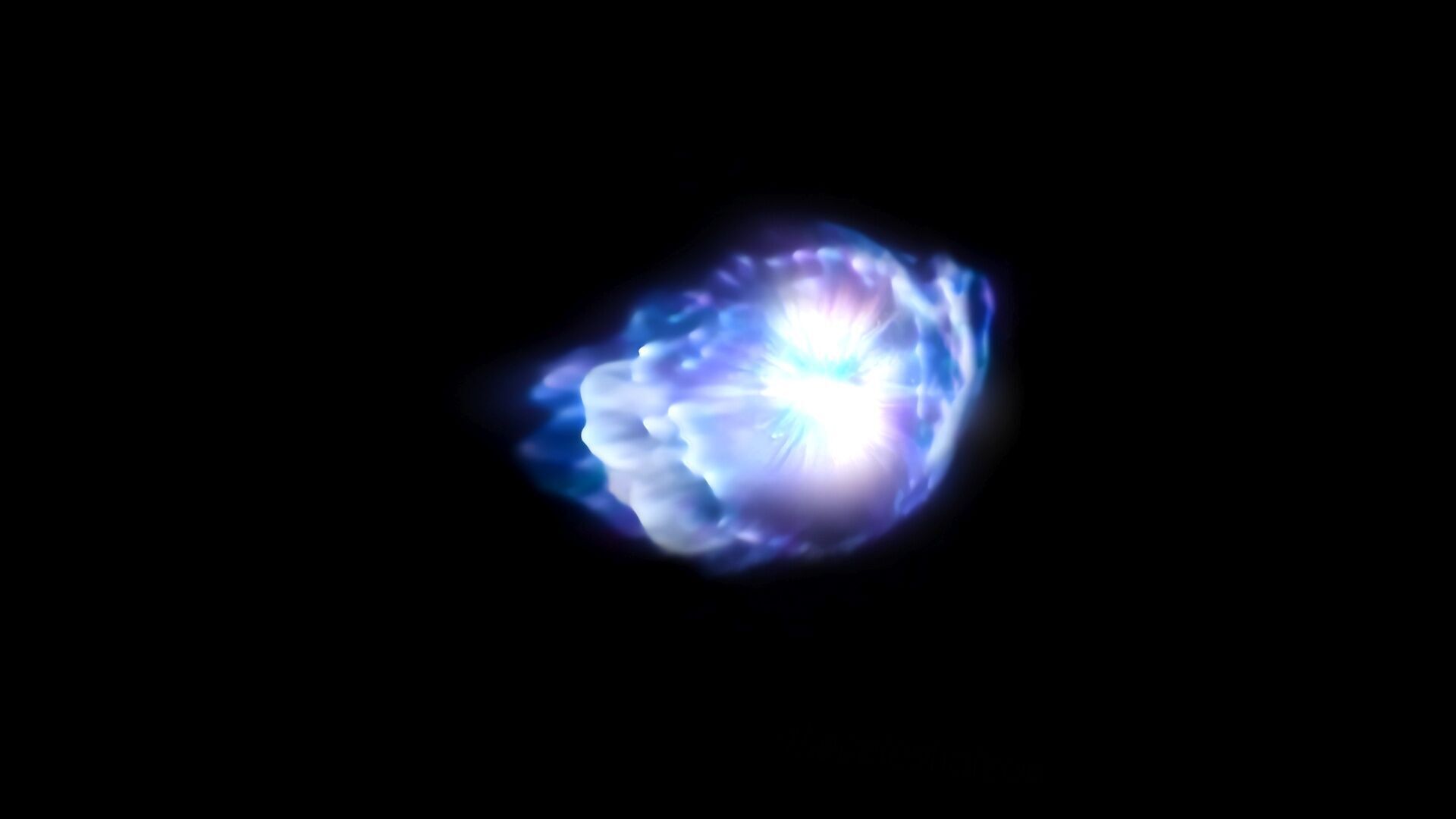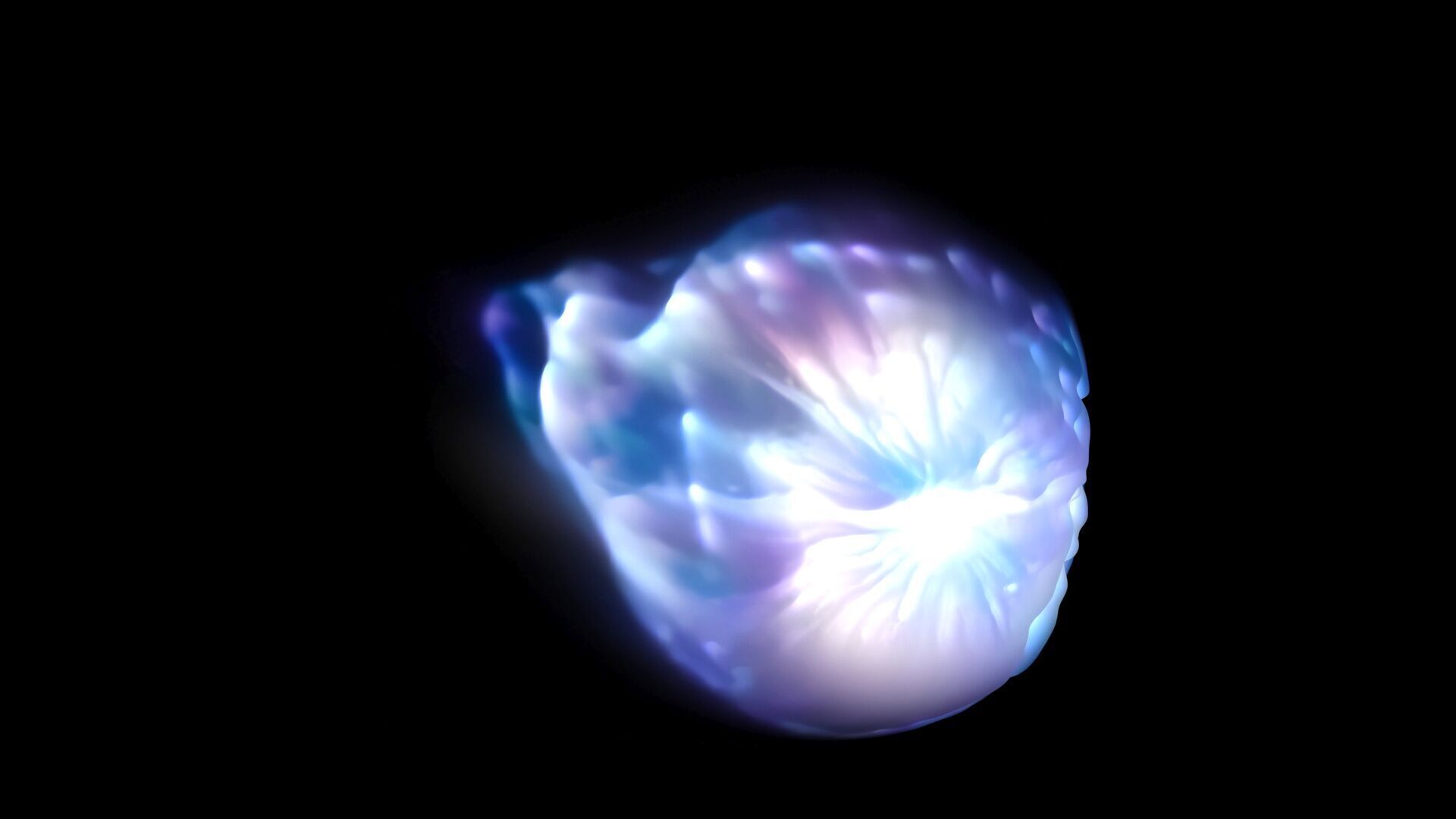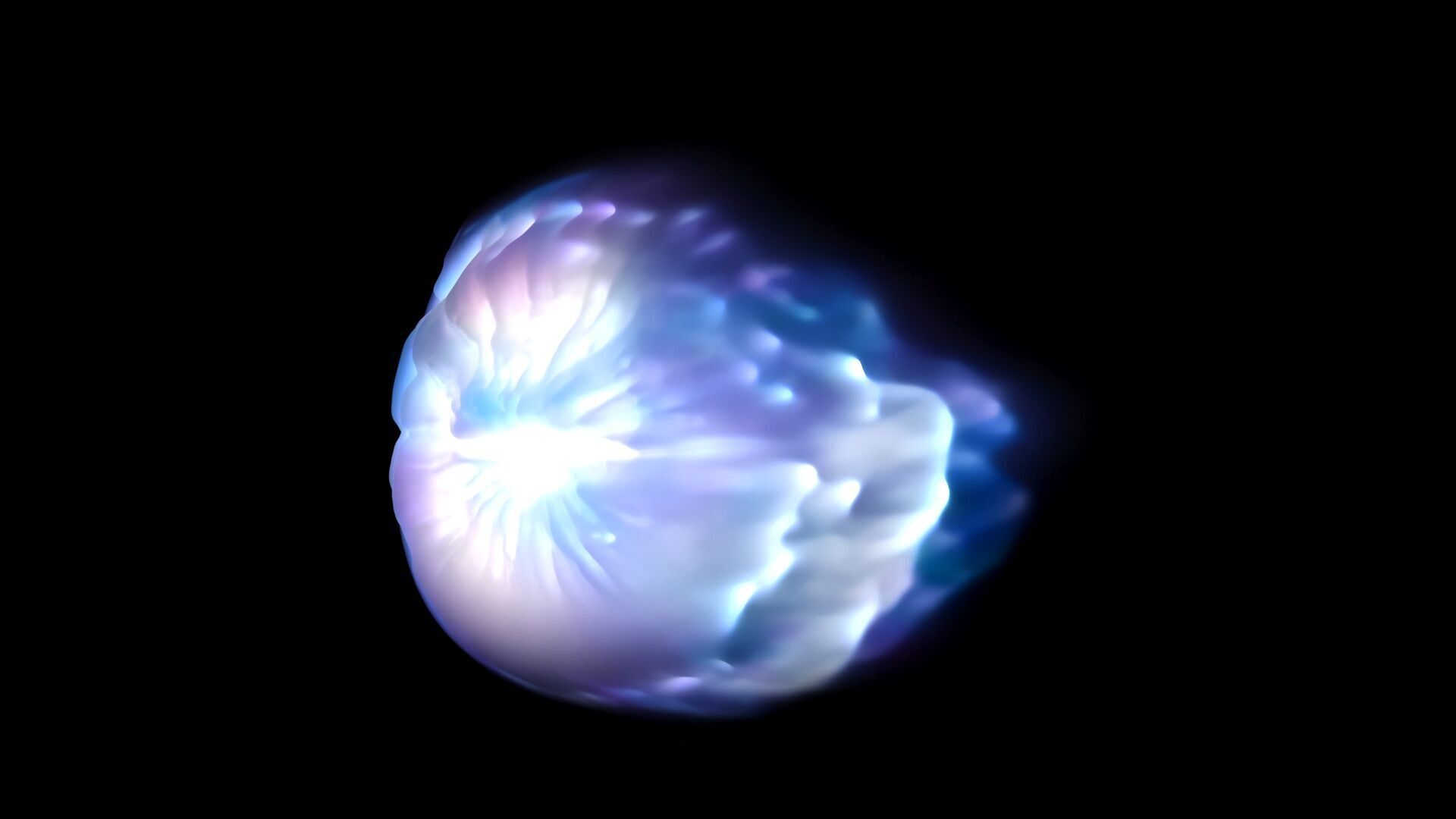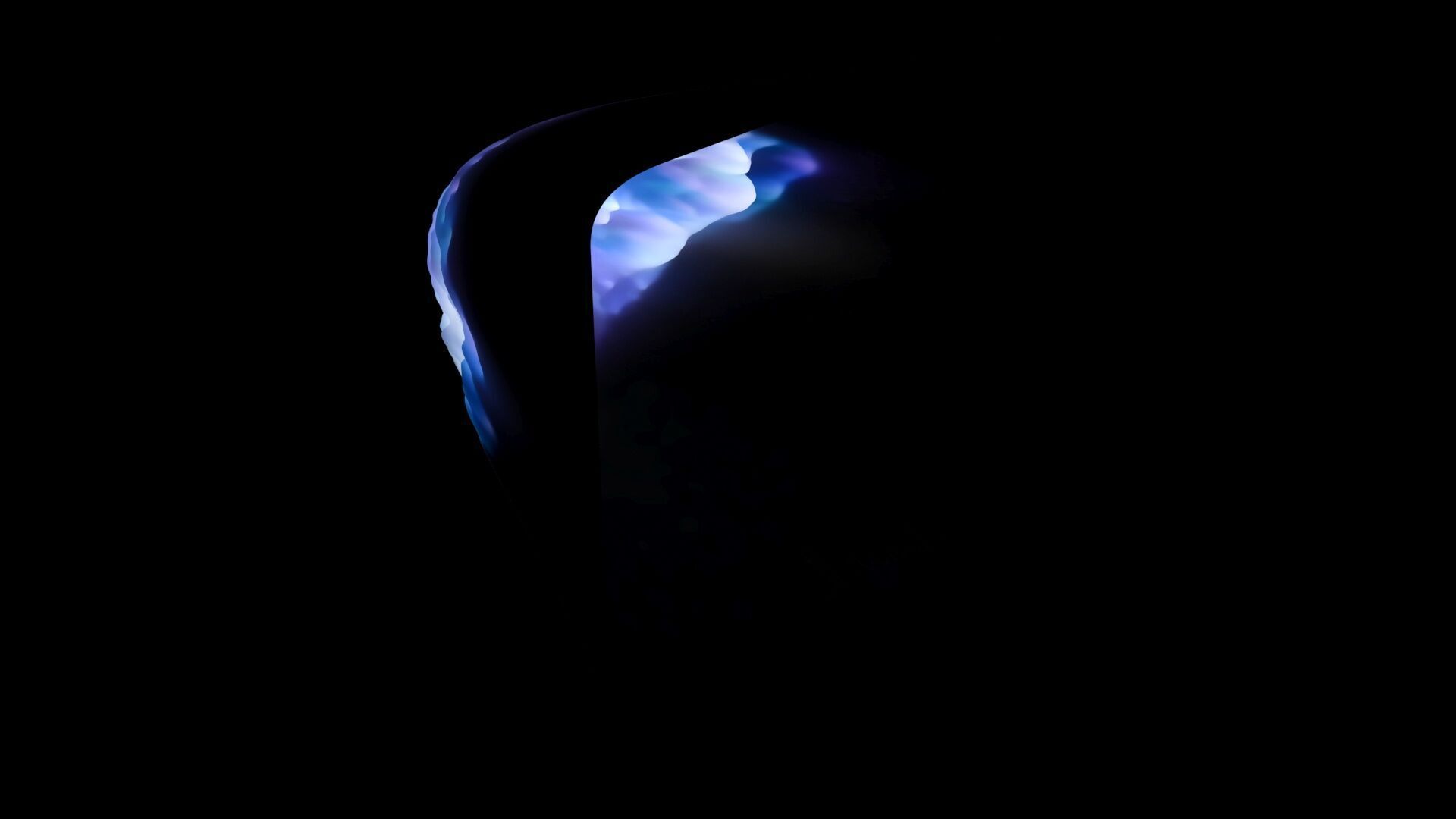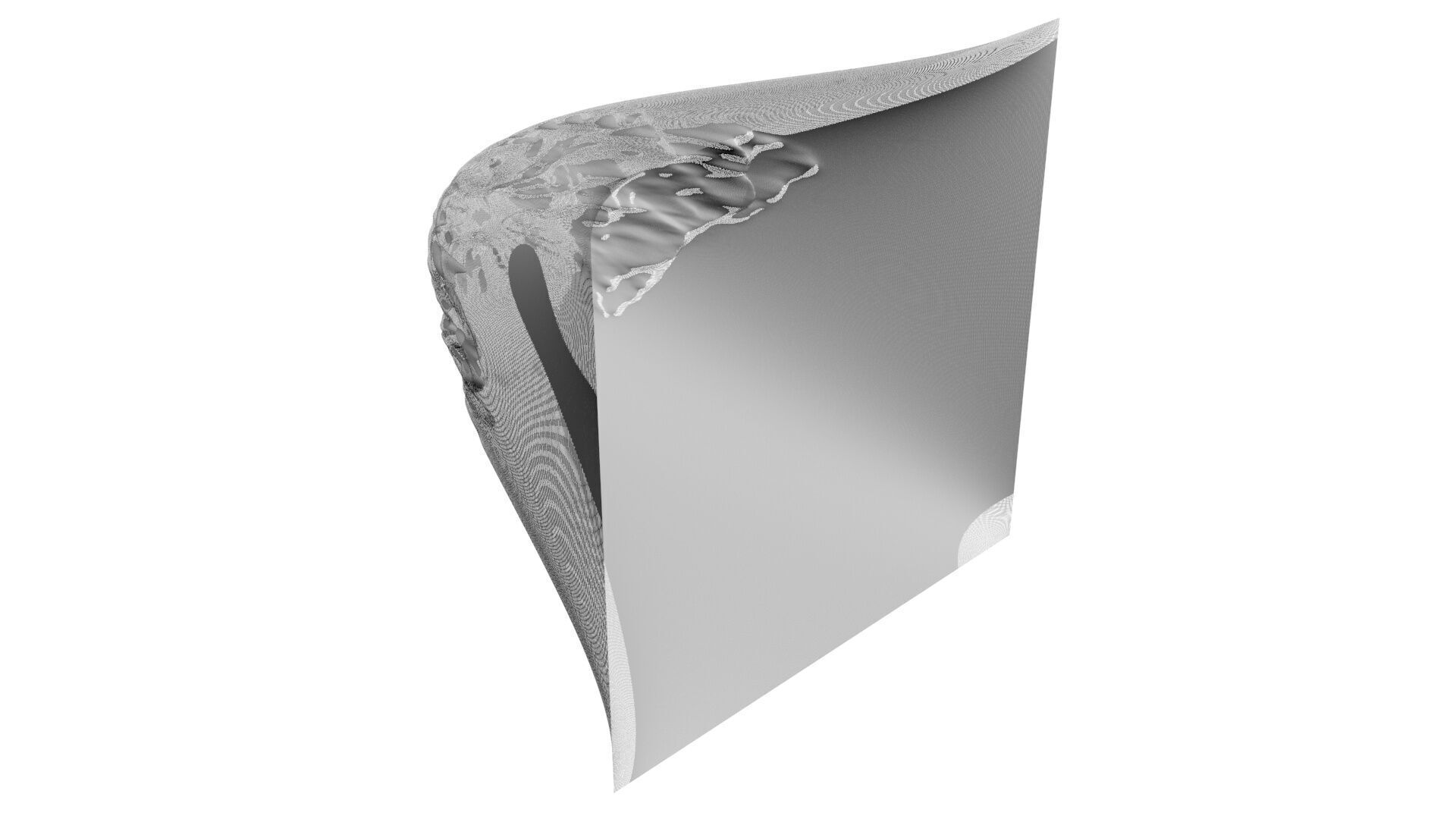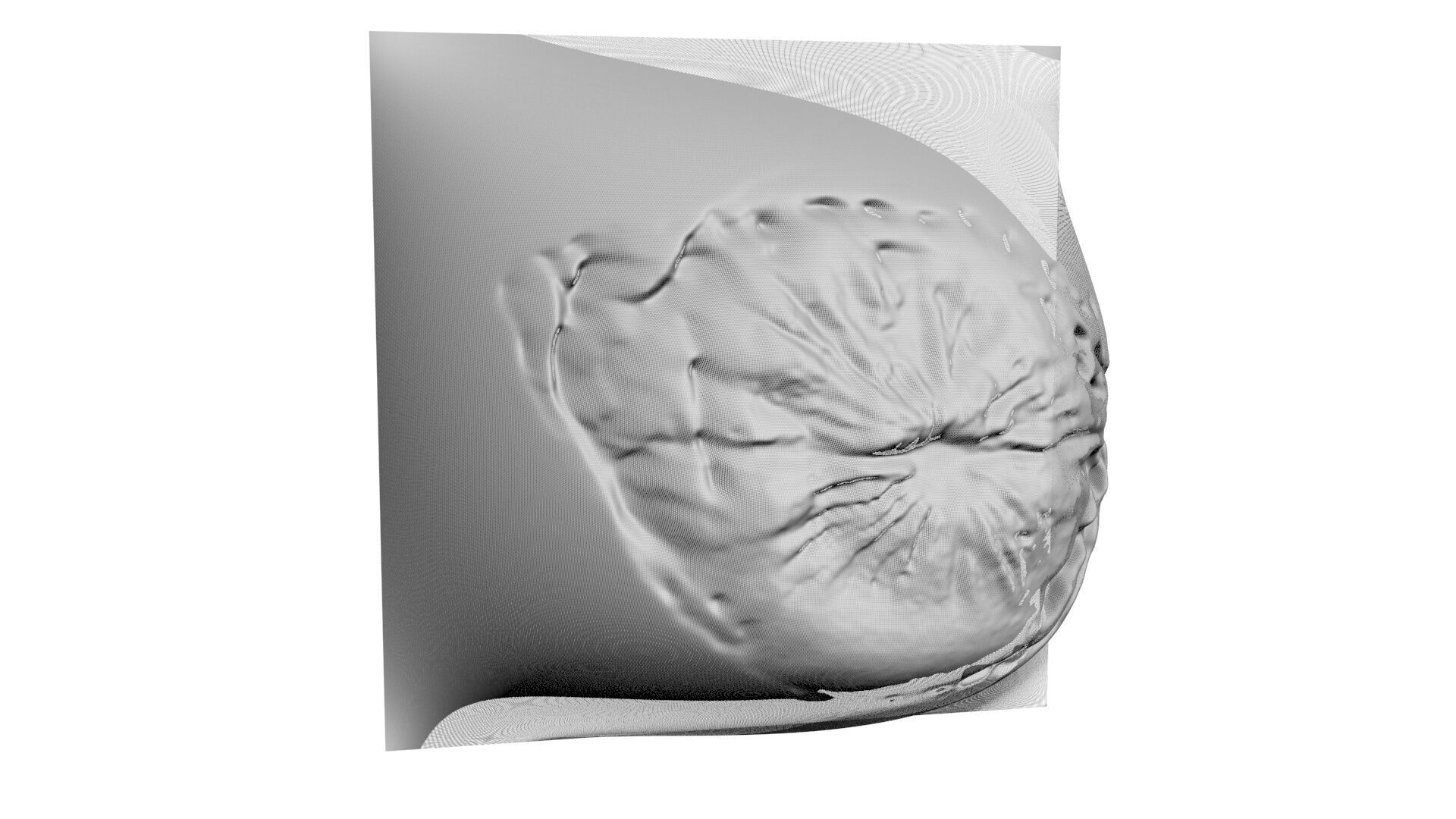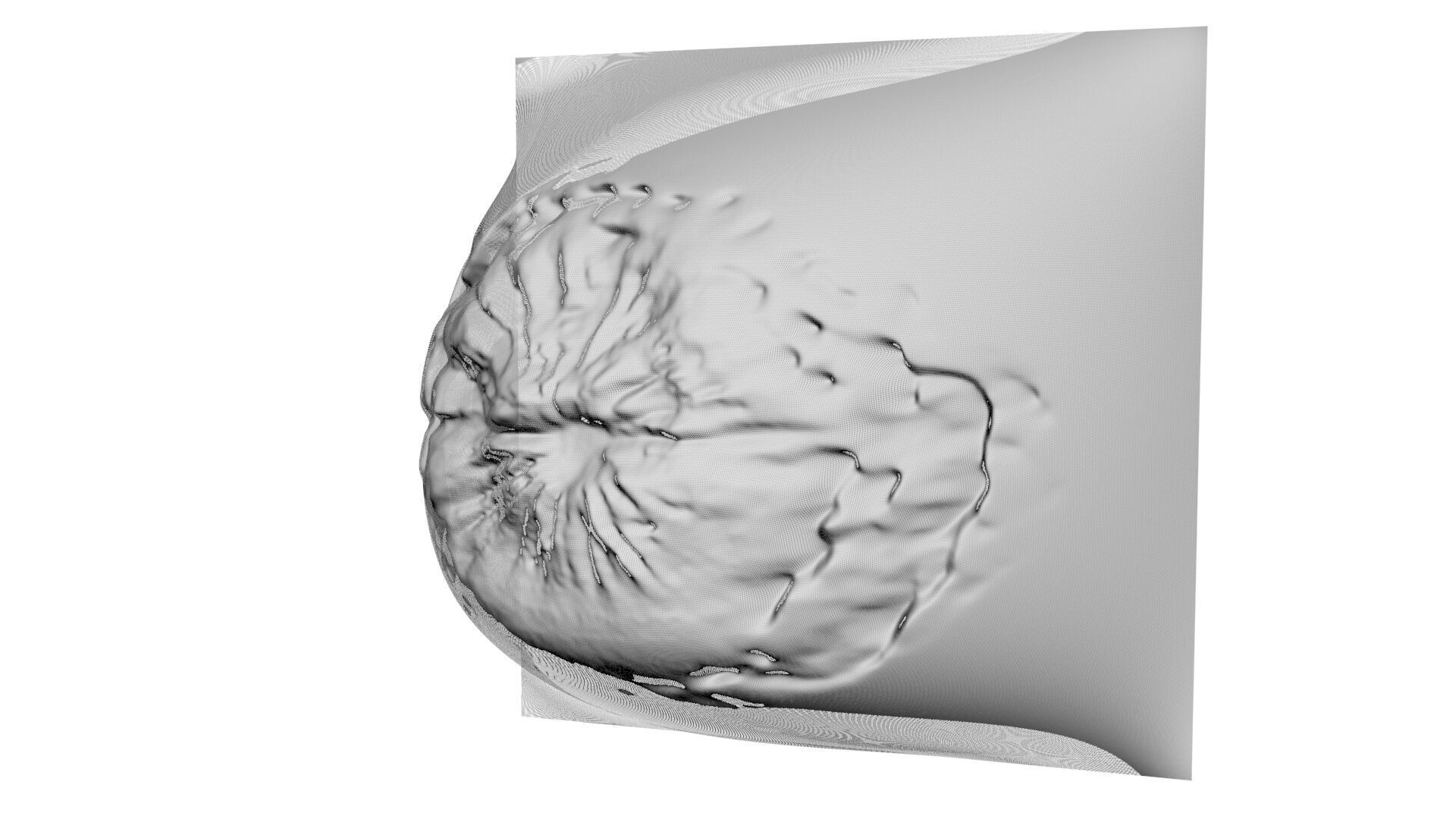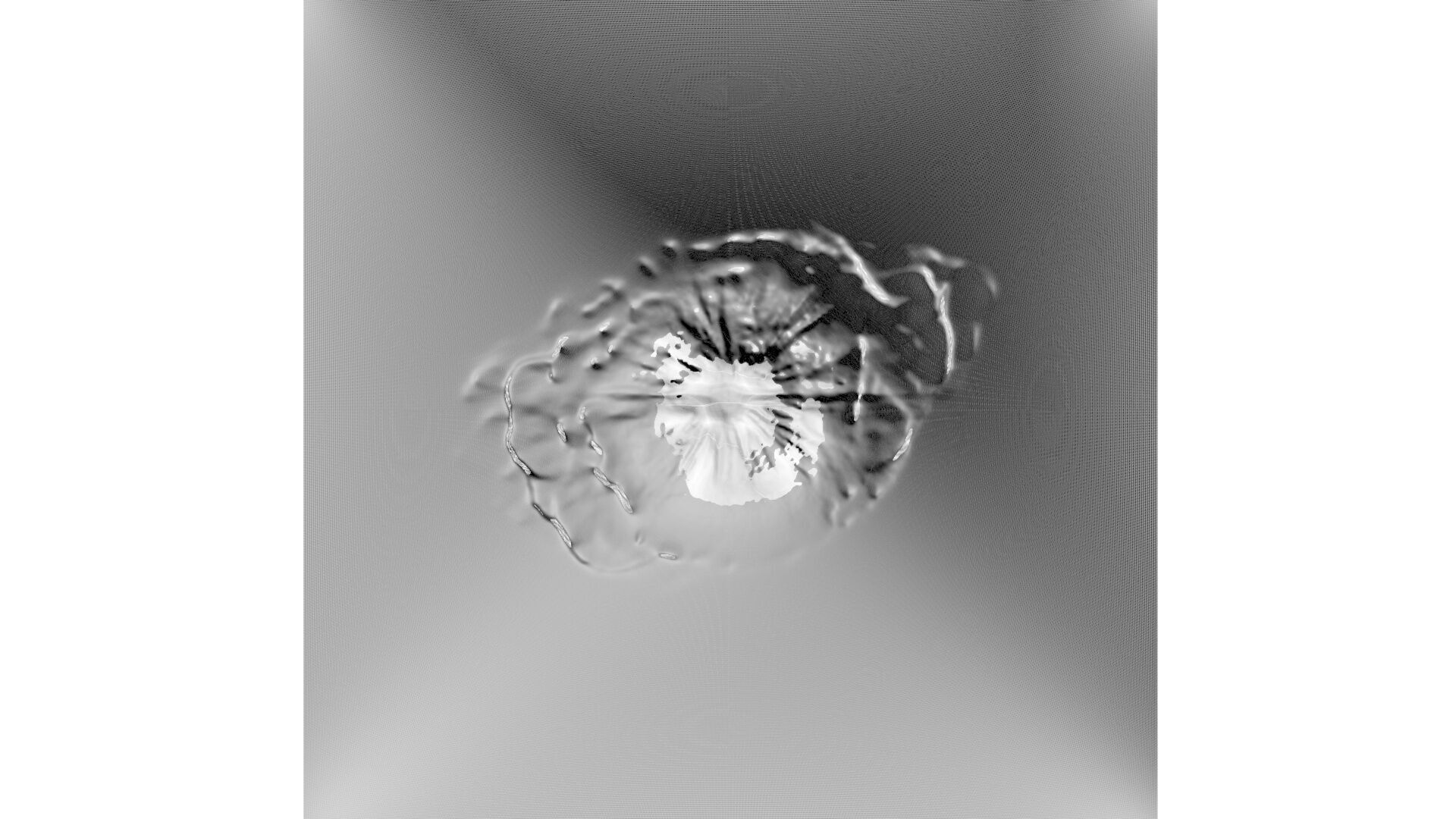
ASASSN 15lh 3D model
DescriptionASASSN-15lh. ASASSN-15lh is an extremely luminous astronomical transient event discovered by the All Sky Automated Survey for SuperNovae, with the appearance of a superluminous supernova event. ASASSN-15lh (supernova designation SN 2015L) is an extremely luminous astronomical transient event discovered by the All Sky Automated Survey for SuperNovae (ASAS-SN), with the appearance of a superluminous supernova event. It was first detected on June 14, 2015, located within a faint galaxy in the southern constellation Indus, and was the most luminous supernova-like object ever observed. At its peak, ASASSN-15lh was 570 billion times brighter than the Sun, and 20 times brighter than the combined light emitted by the Milky Way Galaxy. The emitted energy was exceeded by PS1-10adi. The nature of ASASSN-15lh is disputed. The most popular explanations are that it is the most luminous type I supernova (hypernova) ever observed, or a tidal disruption event around a 108 MO supermassive black hole. Other hypotheses include: gravitational lensing; a quark nova inside a Wolf–Rayet star; or a rapid magnetar spindown. A possible supernova was first noticed during an observation in June 2015 by ASAS-SN's twin 14-cm telescopes located at Cerro Tololo Inter-American Observatory, Chile; the team gave it the designation ASASSN-15lh. It appeared as a transient dot of light on an image and was confirmed with additional observations from other telescopes. The spectrum of ASASSN-15lh was provided by the 2.5-meter du Pont Telescope in Chile. The Southern African Large Telescope was used to determine the redshift, and hence the distance and luminosity. The Swift space telescope also contributed observations. On July 24, the event formally received the supernova designation SN 2015L from the Central Bureau of Astronomical Telegrams. Later, other images were found to have been made of ASASSN-15lh as early as May 8, 2015. At this stage the visual magnitude was 17.4. From May 8 the possible supernova brightened until it reached a peak brightness of magnitude 16.9 on June 5. By September the brightness had dropped to magnitude 18.2. There was an unusual rebrightening of up to 1.75 magnitudes at blue and ultraviolet wavelengths, starting about 90 days after the maximum. This coincided with a plateau in the bolometric luminosity that lasted for 120 days.
Texture Resolution: 1446 x 1446

